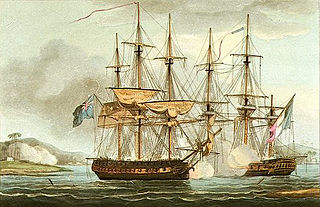Several vessels have been named Amphititre for Amphitrite, the sea goddess of Greek mythology:

In ancient Greek mythology, Amphitrite was a sea goddess and wife of Poseidon and the queen of the sea. She was a daughter of Doris and Nereus. Under the influence of the Olympian pantheon, she became the consort of Poseidon and was later used as a symbolic representation of the sea and the goddess of calm seas and safe passage through storms. It is said her voice is the only thing that can calm her husband’s mightiest of rages and lull him to a deep slumber so the ocean could be back at peace. In Roman mythology, the consort of Neptune, a comparatively minor figure, was Salacia, the goddess of saltwater.

Greek mythology is the body of myths originally told by the ancient Greeks and a genre of Ancient Greek folklore. These stories concern the origin and the nature of the world, the lives and activities of deities, heroes, and mythological creatures, and the origins and significance of the ancient Greeks' own cult and ritual practices. Modern scholars study the myths in an attempt to shed light on the religious and political institutions of ancient Greece and its civilization, and to gain understanding of the nature of myth-making itself.
- Amphitrite (1789 ship)'s origins are obscure. She first appeared in Lloyd's Register in 1789. Her entry notes that she had been almost rebuilt in 1783 and had undergone a good repair in 1788, presumably under a different name. From 1789 to 1799 she was a whaler in the Northern (Greenland) Whale Fishery. She then started on a voyage as a slave ship but capsized off the coast of Africa.
- Amphitrite (1790 ship) was launched at Whitby. A French privateer captured her in 1794, but the Royal Navy quickly recaptured her. She spent much of her career as a West Indiaman, finishing as a London transport. She was last listed in 1810 or 1811.
- Amphitrite (1791 ship) was launched at Scarborough. In 1793–1794 she served the British Royal Navy as a hired armed vessel. She was last listed in 1797.
- Amphitrite (1794 ship) was launched at Hamburg. She traded primarily between London and Hambro. A French privateer captured her in 1798.
- Amphitrite (1796 ship) was launched at Kingston upon Hull. A French privateer captured her in 1799 on Amphitrite's first voyage as a slave ship.
- Amphitrite (1802 ship) was built at Appledore, Torridge, (equally Bideford). Under various owners and masters she traded across the North Atlantic and to the Baltic. She wrecked in 1833 with heavy loss of life while transporting female convicts to New South Wales.
Amphitrite was launched at Whitby in 1790. A French privateer captured her in 1794, but the Royal Navy recaptured her. She spent much of her career as a West Indiaman, finishing as a London transport. She was last listed in 1810 or 1811.

Whitby is a seaside town, port and civil parish in the Scarborough borough of North Yorkshire, England. Situated on the east coast of Yorkshire at the mouth of the River Esk, Whitby has a maritime, mineral and tourist heritage. Its East Cliff is home to the ruins of Whitby Abbey, where Cædmon, the earliest recognised English poet, lived. The fishing port emerged during the Middle Ages, supporting important herring and whaling fleets, and was where Captain Cook learned seamanship. Tourism started in Whitby during the Georgian period and developed with the arrival of the railway in 1839. Its attraction as a tourist destination is enhanced by the proximity of the high ground of the North York Moors national park and the heritage coastline and by association with the horror novel Dracula. Jet and alum were mined locally, and Whitby Jet, which was mined by the Romans and Victorians, became fashionable during the 19th century.

The Royal Navy (RN) is the United Kingdom's naval warfare force. Although warships were used by the English kings from the early medieval period, the first major maritime engagements were fought in the Hundred Years' War against the Kingdom of France. The modern Royal Navy traces its origins to the early 16th century; the oldest of the UK's armed services, it is known as the Senior Service.

